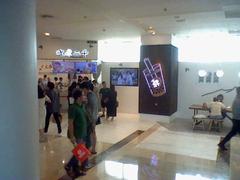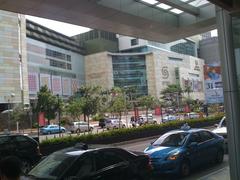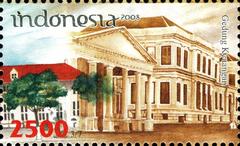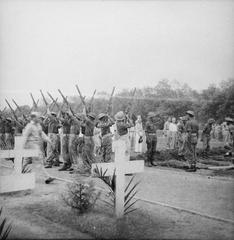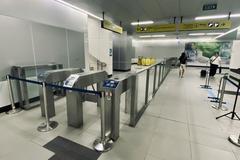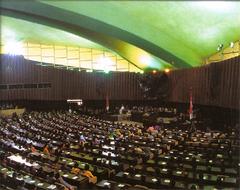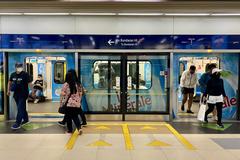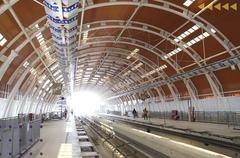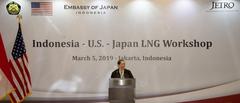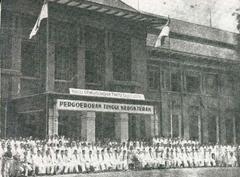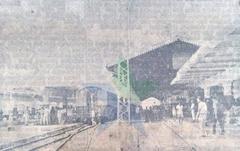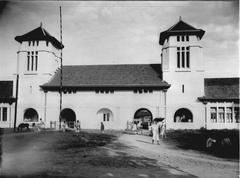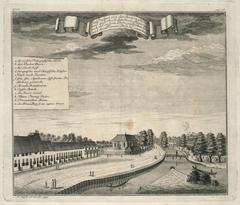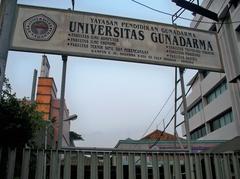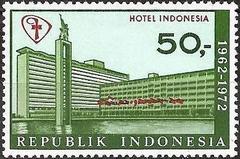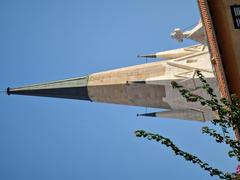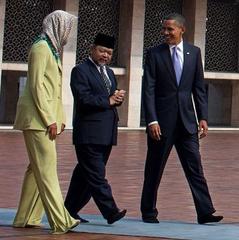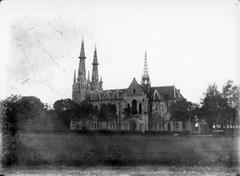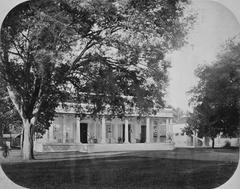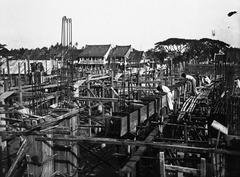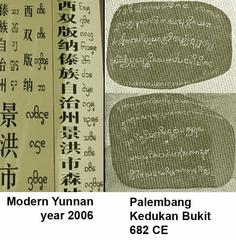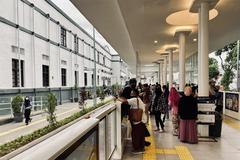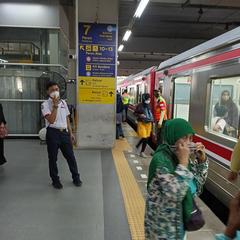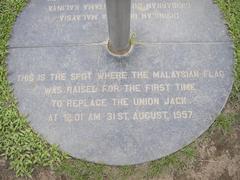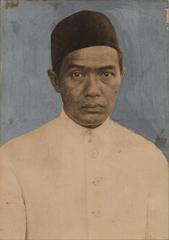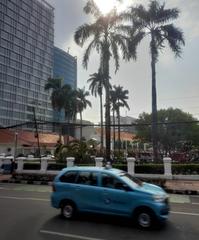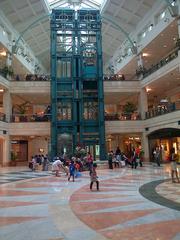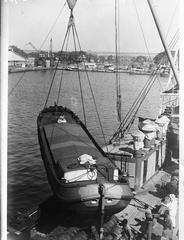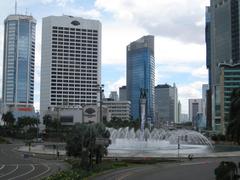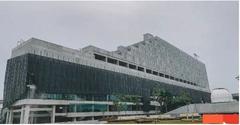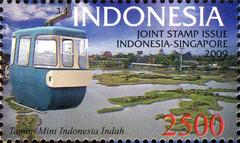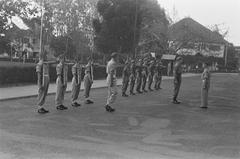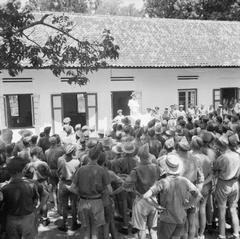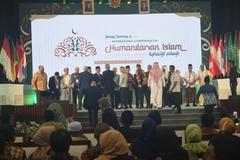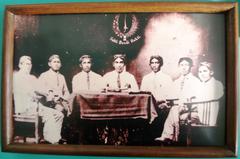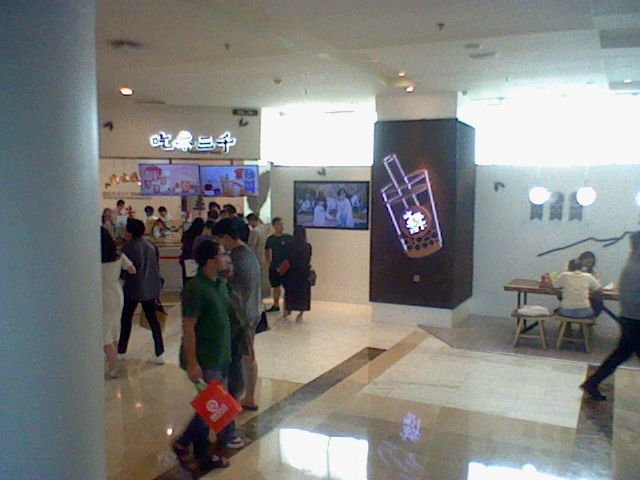
Comprehensive Guide to Visiting Grand Indonesia Shopping Town, Jakarta, Indonesia
Publication Date: 19/07/2024
Introduction
Grand Indonesia Shopping Town, situated in the bustling heart of Jakarta, Indonesia, is more than just a premier shopping destination; it is a cultural and historical landmark that encapsulates the essence of modernity intertwined with rich Indonesian heritage. Established in 2007 by PT Grand Indonesia, a subsidiary of the Djarum Group, this architectural marvel has significantly contributed to the urban renewal of the Thamrin area, an essential commercial district in Jakarta. The complex also includes the renowned Hotel Indonesia Kempinski, originally built in 1962 to commemorate Indonesia’s independence, thereby linking the past with the present (Jakarta Post).
Spanning an impressive 640,000 square meters, Grand Indonesia Shopping Town is divided into two main sections—the East Mall and the West Mall—connected by the iconic Skybridge. This unique layout offers visitors a seamless shopping experience, with a diverse range of high-end international brands, local boutiques, and an extensive selection of dining and entertainment options. The mall’s design, which blends contemporary and traditional Indonesian architectural elements, creates a visually appealing and culturally rich environment (Galeri Indonesia Kaya).
In addition to its architectural and retail offerings, Grand Indonesia plays a pivotal role in Jakarta’s economy, generating significant revenue and attracting numerous businesses and investors. It also serves as a cultural hub, regularly hosting events, exhibitions, and performances that showcase Indonesia’s artistic heritage. Whether you’re a local resident or a tourist, Grand Indonesia Shopping Town offers a comprehensive and immersive experience that reflects the dynamic and diverse nature of Jakarta.
Table of Contents
- [Introduction](#introductionintroduction)
- [History and Significance](#history-and-significancehistory-and-significance)
- [Historical Background](#historical-backgroundhistorical-background)
- [Architectural Significance](#architectural-significancearchitectural-significance)
- [Visitor Information](#visitor-informationvisitor-information)
- [Visiting Hours and Tickets](#visiting-hours-and-ticketsvisiting-hours-and-tickets)
- [Travel Tips](#travel-tipstravel-tips)
- [Economic Impact](#economic-impacteconomic-impact)
- [Cultural Significance](#cultural-significancecultural-significance)
- [Social Significance](#social-significancesocial-significance)
- [Technological Advancements](#technological-advancementstechnological-advancements)
- [Future Prospects](#future-prospectsfuture-prospects)
- [FAQ](#faqfaq)
- [Conclusion](#conclusionconclusion)
- [References](#referencesreferences)
History and Significance
Historical Background
Grand Indonesia Shopping Town, located in the heart of Jakarta, Indonesia, is a premier shopping destination that has become a symbol of modernity and luxury in the city. The complex was developed by PT Grand Indonesia, a subsidiary of the Djarum Group, one of Indonesia’s largest conglomerates. The shopping town officially opened its doors to the public in 2007, marking a significant milestone in Jakarta’s retail landscape.
The development of Grand Indonesia was part of a broader urban renewal project aimed at revitalizing the Thamrin area, a key commercial district in Jakarta. The project included the renovation of the iconic Hotel Indonesia, which was originally built in 1962 to commemorate Indonesia’s independence. The hotel, now known as Hotel Indonesia Kempinski, is an integral part of the Grand Indonesia complex, linking the past with the present.
Architectural Significance
Grand Indonesia Shopping Town is renowned for its architectural grandeur and innovative design. The complex is divided into two main sections—the East Mall and the West Mall, connected by a multi-level bridge known as the Skybridge. The design of the shopping town reflects a blend of contemporary and traditional Indonesian architectural elements, creating a unique and visually appealing environment.
The East Mall features a modern, sleek design with high ceilings and expansive glass facades, allowing natural light to flood the interior spaces. In contrast, the West Mall incorporates more traditional Indonesian motifs and materials, such as batik patterns and wooden accents, providing a warm and inviting atmosphere. This architectural juxtaposition not only enhances the aesthetic appeal of the complex but also pays homage to Indonesia’s rich cultural heritage.
Visitor Information
Visiting Hours and Tickets
Grand Indonesia Shopping Town is open daily from 10 AM to 10 PM. Admission to the shopping town is free, but certain attractions and events may have their own ticket prices. For updated information on specific events and ticket prices, visitors are encouraged to check the official Grand Indonesia website.
Travel Tips
- Location: Grand Indonesia is centrally located in Jakarta and is easily accessible by various modes of transport, including buses, taxis, and the Jakarta MRT.
- Best Time to Visit: Weekdays are generally less crowded, making it an ideal time for a more relaxed shopping experience.
- Nearby Attractions: While visiting Grand Indonesia, consider exploring nearby attractions such as the National Monument (Monas), the Jakarta Cathedral, and the Istiqlal Mosque.
- Accessibility: The complex is wheelchair-friendly, with elevators and ramps available for easy access.
Economic Impact
Since its inception, Grand Indonesia Shopping Town has played a pivotal role in boosting Jakarta’s economy. The complex houses over 500 retail outlets, ranging from high-end international brands to local boutiques, catering to a diverse clientele. This extensive retail offering has made Grand Indonesia a major shopping destination for both locals and tourists, contributing significantly to the city’s retail sector.
In addition to retail, the complex also features a wide array of dining options, entertainment facilities, and office spaces, creating a vibrant mixed-use environment. The presence of these amenities has attracted numerous businesses and investors, further stimulating economic growth in the area. According to a report by the Jakarta Post, Grand Indonesia generates an estimated annual revenue of over IDR 2 trillion (approximately USD 140 million), underscoring its economic significance (Jakarta Post).
Cultural Significance
Grand Indonesia Shopping Town is not just a commercial hub; it is also a cultural landmark that reflects the dynamic and diverse nature of Jakarta. The complex regularly hosts cultural events, exhibitions, and performances, showcasing the rich artistic heritage of Indonesia. These events provide a platform for local artists and performers to reach a wider audience, fostering cultural exchange and appreciation.
One of the most notable cultural attractions within Grand Indonesia is the Galeri Indonesia Kaya, an interactive cultural center that offers visitors a glimpse into Indonesia’s diverse cultural traditions. The gallery features multimedia exhibits, traditional music and dance performances, and workshops, providing an immersive cultural experience for visitors (Galeri Indonesia Kaya).
Social Significance
Grand Indonesia Shopping Town has also become a social hub for Jakarta’s residents. The complex’s strategic location, coupled with its extensive range of amenities, makes it a popular meeting place for friends and families. The shopping town’s numerous cafes, restaurants, and entertainment venues provide ample opportunities for social interaction and leisure activities.
Moreover, Grand Indonesia has played a role in promoting social responsibility and community engagement. The complex regularly organizes charity events, blood donation drives, and environmental campaigns, encouraging visitors to contribute to social causes. These initiatives have helped foster a sense of community and social awareness among Jakarta’s residents.
Technological Advancements
In recent years, Grand Indonesia Shopping Town has embraced technological advancements to enhance the visitor experience. The complex has implemented various digital solutions, such as mobile apps and interactive kiosks, to provide visitors with real-time information on store locations, promotions, and events. These technological innovations have made navigation within the complex more convenient and efficient.
Furthermore, Grand Indonesia has integrated sustainable practices into its operations, such as energy-efficient lighting and waste management systems, to minimize its environmental impact. These efforts reflect the complex’s commitment to sustainability and innovation, setting a benchmark for other shopping centers in the region.
Future Prospects
Looking ahead, Grand Indonesia Shopping Town is poised to maintain its status as a premier shopping and cultural destination in Jakarta. The complex continues to evolve, with plans for further expansion and modernization to meet the changing needs of consumers. Upcoming developments include the introduction of new retail concepts, enhanced dining experiences, and state-of-the-art entertainment facilities.
FAQ
Q: What are the visiting hours for Grand Indonesia Shopping Town?
A: Grand Indonesia Shopping Town is open daily from 10 AM to 10 PM.
Q: Is there an admission fee to enter Grand Indonesia?
A: Admission to the shopping town is free, but certain attractions and events may have their own ticket prices.
Q: What are some nearby attractions?
A: Nearby attractions include the National Monument (Monas), the Jakarta Cathedral, and the Istiqlal Mosque.
Q: Are there any special events or guided tours available?
A: Yes, Grand Indonesia regularly hosts cultural events, exhibitions, and guided tours. For more information, check the official website.
Conclusion
Grand Indonesia Shopping Town stands as a testament to Jakarta’s growth and modernization. Its historical significance, architectural grandeur, economic impact, cultural contributions, social role, and technological advancements make it a landmark destination that continues to shape the city’s landscape. As it moves forward, Grand Indonesia remains committed to providing a world-class experience for all its visitors. For the latest updates and information, be sure to visit the official Grand Indonesia website.
References
- Jakarta Post, 2024, Jakarta Post
- Grand Indonesia, 2024, Grand Indonesia
- Galeri Indonesia Kaya, 2024, Galeri Indonesia Kaya
- Kidzania Jakarta, 2024, Kidzania Jakarta
- CGV Cinemas, 2024, CGV Cinemas
